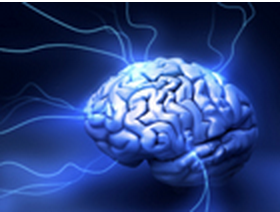
As World Alzheimer’s Month nears its end, numerous studies shed light on the workings of the brain and offer hope for new methods of prevention, diagnosis and treatment of Alzheimer’s and other forms of dementia.
-
One new study of older adults, published in the Journal of the American Geriatrics Society, links having multiple chronic conditions with an increased risk of mild cognitive impairment or dementia. Participants with more than one chronic condition were 38% more likely to develop mild cognitive impairment or dementia. Participants with four or more conditions had a 61% increased risk compared with those with 0 or 1 condition. Men also had a higher risk than women. Senior author Rosebud Roberts, MB, ChB, says that the findings underscore the importance of preventive care and “also emphasize that chronic diseases, once diagnosed, should be efficiently managed.”
-
A study published in JAMA found that those with probable Alzheimer’s disease who received the combination medication dextromethorphan-quinidine had less occurrences and severity of agitation compared with study participants who received placebo. Although the authors state that their preliminary findings need to be confirmed with additional research, a related editorial notes “a reasonably strong case to prioritize dextromethorphan-quinidine as an off-label treatment for agitation, possibly as a safer alternative to atypical antipsychotics.” Consensus on the treatment “must understand and incorporate patient and caregiver views regarding the evaluation of risk and benefits in relation to these treatments” write Anne Corbett, PhD, of King’s College London, and colleagues.
-
A study published in Nature Medicine has found that a drug used to treat rheumatoid arthritis effectively reversed tau-related dysfunction in an animal model of frontotemporal dementia, or FTD. The drug, salsalate, prevented the accumulation of tau in the brain and protected against cognitive impairments resembling impairments seen in Alzheimer’s disease and FTD. “Targeting tau acetylation could be a new therapeutic strategy against human tauopathies, like Alzheimer’s disease and FTD,” says co-senior author Eric Verdin, MD, a senior investigator at the Gladstone Institutes. “Given that salsalate is a prescription drug with a long history of a reasonable safety profile, we believe it can have immediate clinical implications.” A human trial using salsalate to reduce tau levels in progressive supranuclear palsy, another tau-mediated neurological condition, already has begun.
-
Research published in Neurology has found that the method for detecting early signs of Alzheimer’s disease using amyloid PET imaging works as well as the previously used cerebrospinal fluid sample method. “In the study, both the cerebrospinal fluid sample and the amyloid PET scans were able to identify approximately 90 per cent of the patients who would be diagnosed with Alzheimer’s later on. Our conclusion is therefore that the two methods work equally well to achieve this aim. One can thus choose the method on the basis of cost, expertise or patient preference,” says Sebastian Palmqvist, MD, PhD, of Lund University in Sweden. Both methods also identified which individuals are healthy and unlikely to develop Alzheimer’s disease within the next 10 years.
-
Researchers publishing online in the Journal of Neuroscience examined activity in a little-studied part of the brain associated with memory (the CA3 cluster of cells in the hippocampus) and found the reason that neurons there become more active in old age, suggesting a new target for future therapies to combat memory loss in aging and Alzheimer’s disease. Future research will examine another poorly understood brain region that sends input to the hippocampus, called the entorhinal cortex, and examine how neurons there act differently in young and aging brains.



